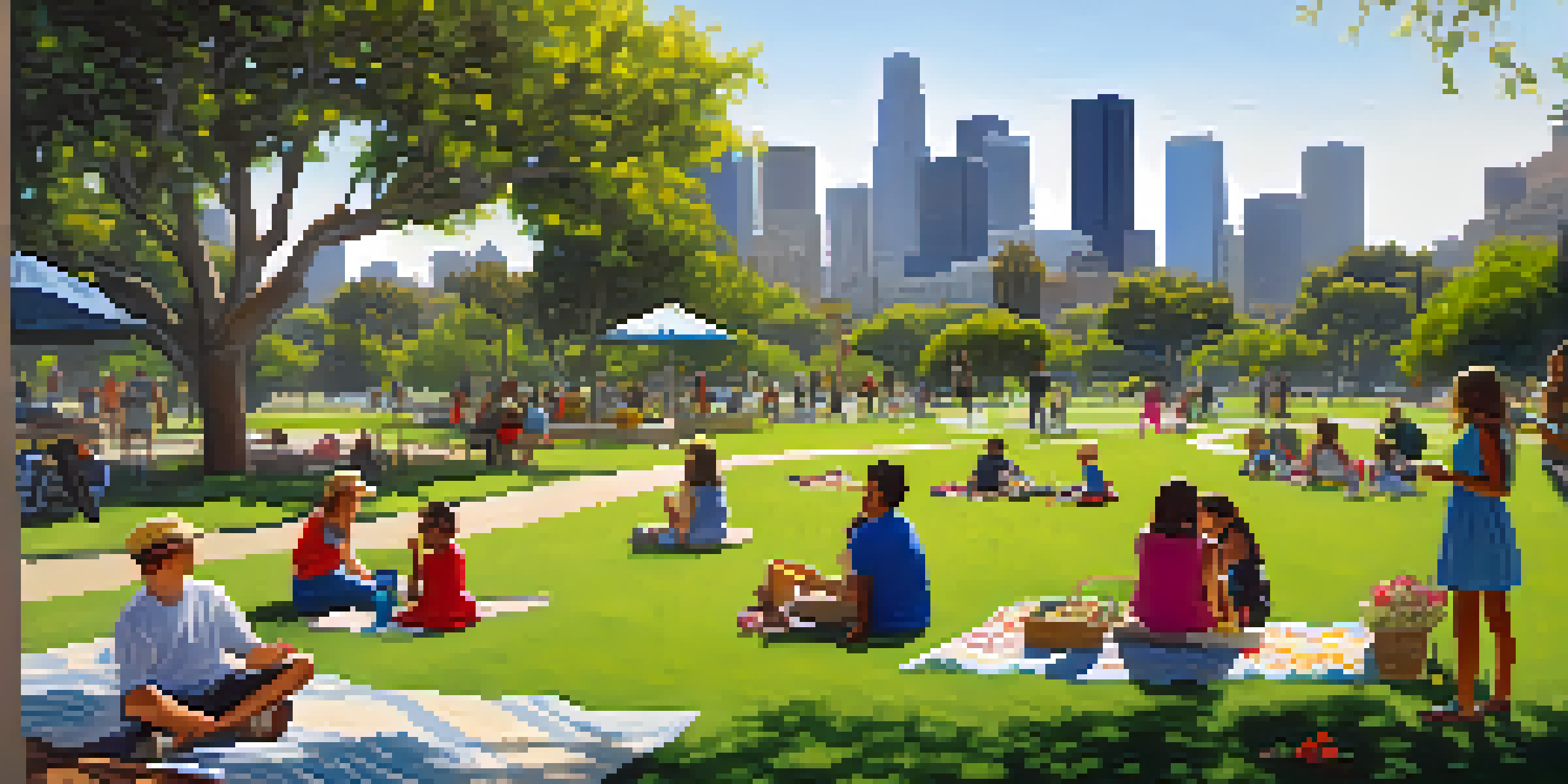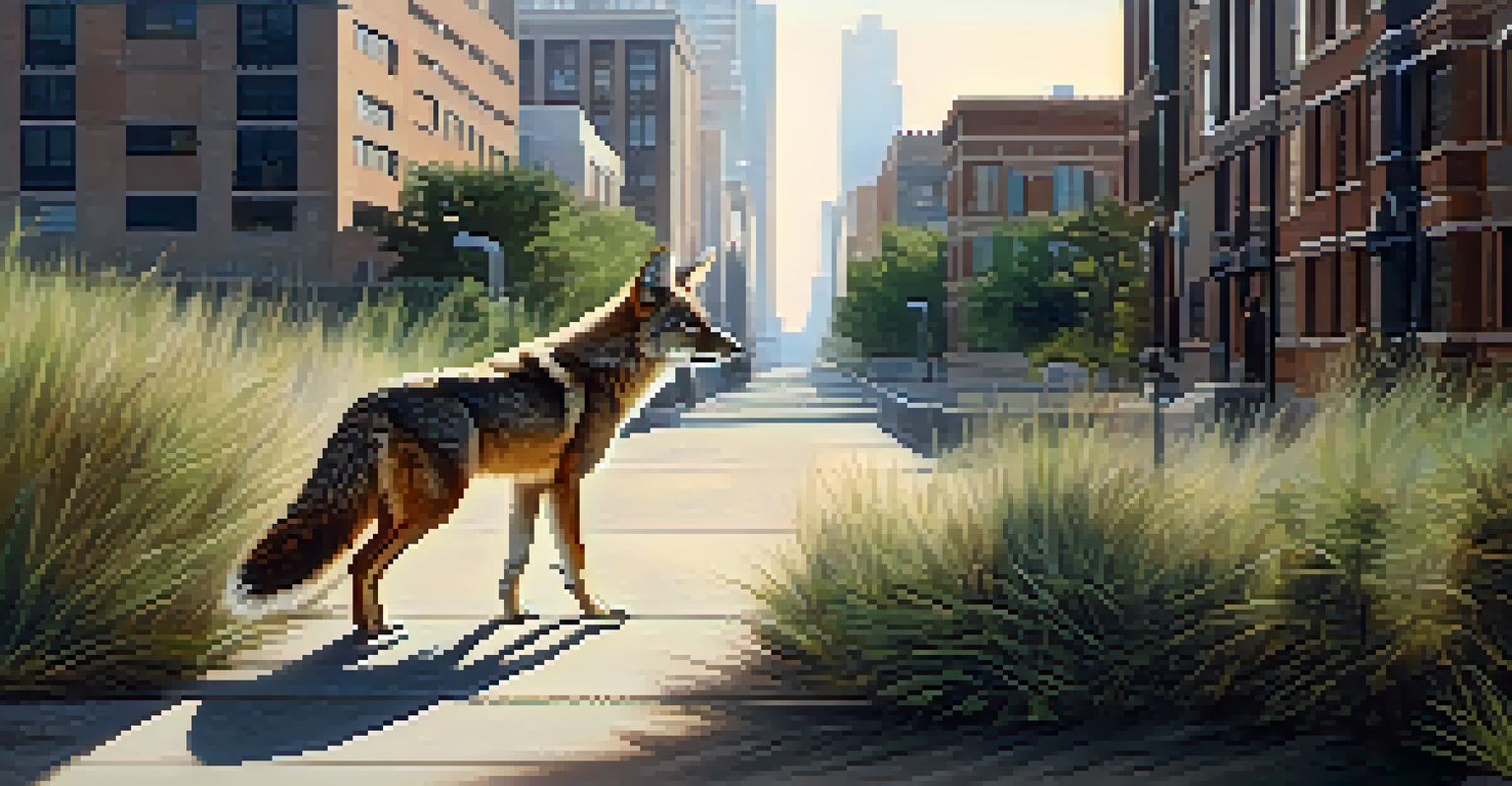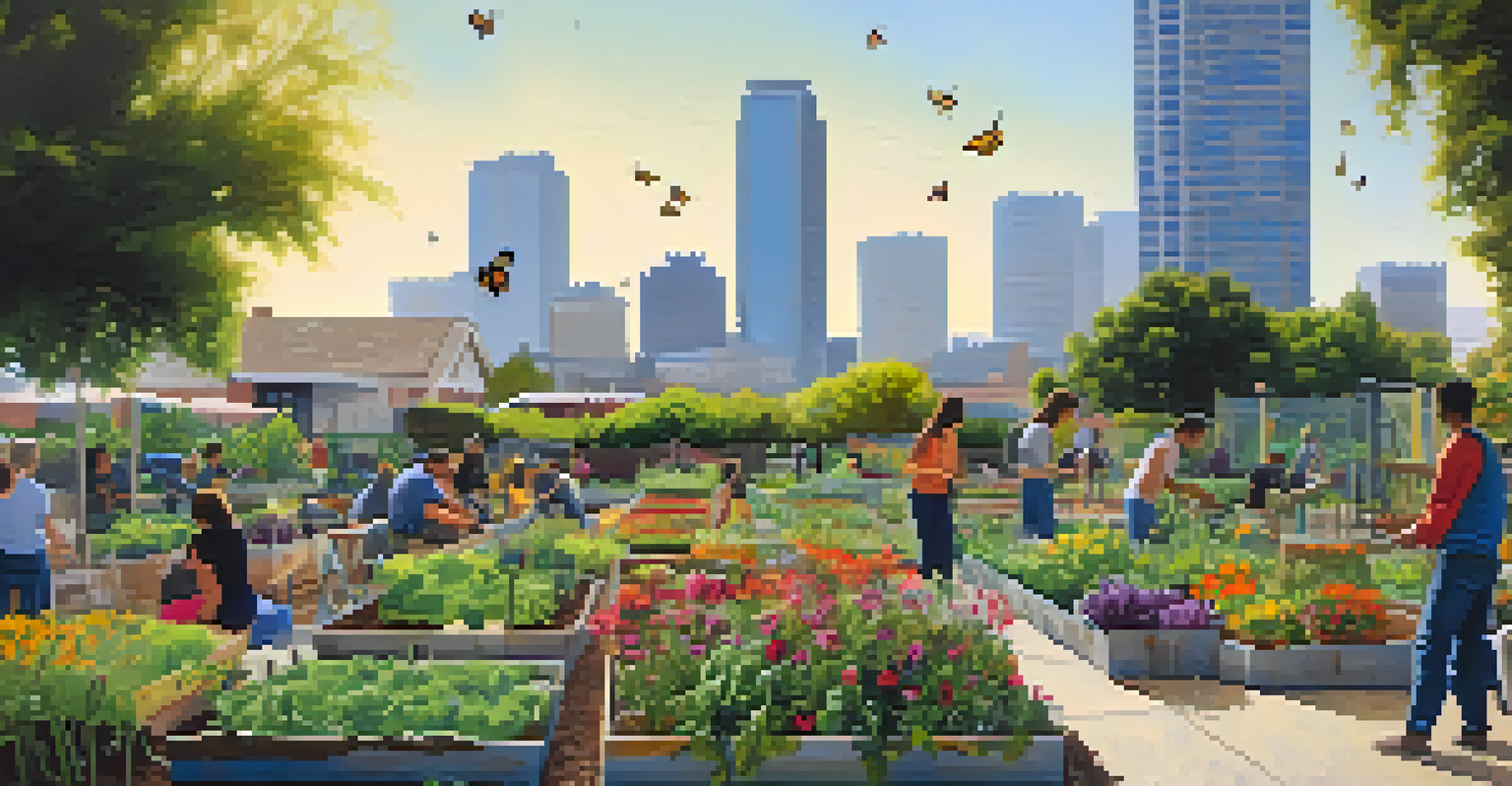Impact of Urbanization on Wildlife in Los Angeles

Understanding Urbanization and Its Growth in LA
Urbanization refers to the increasing number of people living in urban areas, and in Los Angeles, this phenomenon has been significant. Over the decades, LA has transformed from a series of small towns into a sprawling metropolis, with more than four million residents. This growth has led to extensive development, including homes, roads, and commercial spaces, dramatically altering the landscape.
The future will be shaped by the choices we make today, and we must choose wisely to ensure that our urban spaces can coexist with the natural world.
As urban areas expand, natural habitats are often replaced by buildings and infrastructure, which can disrupt local ecosystems. In Los Angeles, the growth of urban areas has encroached on vital wildlife habitats, pushing many species to the brink. This change not only affects the animals directly but also impacts the ecological balance that supports them.
Understanding how urbanization shapes our environment is crucial in addressing the challenges faced by wildlife. By recognizing the extent of urban growth, we can begin to explore solutions that protect both the urban landscape and the diverse species that call it home.
The Loss of Natural Habitats in Los Angeles
As Los Angeles continues to grow, the loss of natural habitats has become a pressing concern for wildlife. Areas that were once home to diverse flora and fauna have been replaced by concrete and asphalt, leaving animals with fewer places to thrive. This habitat loss not only threatens the survival of many species but also reduces biodiversity in the region.

For example, the coastal areas and wetlands that support various bird species have been significantly diminished due to urban development. These changes can lead to the decline of populations, as animals struggle to find food, shelter, and breeding grounds. Without these essential habitats, many species are forced to adapt or face extinction.
Urbanization Threatens Wildlife Habitats
The rapid growth of urban areas in Los Angeles has led to significant habitat loss, impacting local ecosystems and threatening biodiversity.
Restoration efforts, such as creating green spaces and wildlife corridors, are essential to mitigate habitat loss. By reintroducing natural elements into urban areas, we can help provide safe havens for wildlife, allowing them to coexist alongside the growing human population.
Human-Wildlife Conflicts in Urban Settings
As urbanization encroaches on wildlife habitats, human-wildlife conflicts become more common. Animals such as coyotes, raccoons, and deer often wander into urban areas in search of food, leading to encounters that can be problematic for both parties. These conflicts can result in property damage, accidents, and the potential harm of animals.
In nature's economy, the cost of living is high; the loss of natural habitats is a price we pay for urban growth, but it’s one we must learn to minimize.
For example, coyotes have adapted well to urban life, but their presence can create fear among residents and lead to calls for their removal. However, it's essential to remember that these animals are simply seeking food and shelter, which is increasingly scarce in their natural habitats. Understanding their behavior can help mitigate conflicts and promote coexistence.
Community education plays a pivotal role in addressing these conflicts. By informing residents about wildlife behaviors and promoting responsible practices, such as securing trash and avoiding direct feeding, we can reduce encounters and foster a more harmonious relationship between humans and wildlife.
The Role of Urban Green Spaces in Wildlife Conservation
Urban green spaces, such as parks and gardens, play a critical role in wildlife conservation within Los Angeles. These areas can serve as refuges for various species, providing food and shelter amidst the urban landscape. They also contribute to the overall health of the ecosystem by supporting biodiversity and promoting ecological balance.
For instance, native plants in community gardens can attract pollinators like bees and butterflies, which are essential for plant reproduction. Additionally, parks can act as corridors that connect fragmented habitats, allowing wildlife to move safely between areas. This connectivity is vital for species that require larger territories or specific environmental conditions.
Green Spaces Aid Wildlife Conservation
Urban green spaces, such as parks and gardens, provide essential refuges for wildlife, promoting biodiversity and ecological balance.
Encouraging the development and maintenance of urban green spaces is a win-win situation for both wildlife and residents. Not only do these spaces enhance the beauty of the city, but they also provide opportunities for people to engage with nature and learn about the importance of conservation.
Impact of Climate Change on Urban Wildlife
Climate change is another significant factor influencing wildlife in urban areas like Los Angeles. Rising temperatures, altered precipitation patterns, and extreme weather events can disrupt the delicate balance of ecosystems. This shifting climate can further exacerbate the challenges that urban wildlife already face due to habitat loss and human interaction.
For example, changing temperatures can affect the breeding cycles of certain species, leading to mismatches in food availability and reproductive success. Additionally, invasive species may thrive in warmer conditions, outcompeting native species and disrupting local ecosystems. Urban wildlife must adapt quickly to these changes, which is not always possible.
Addressing the impacts of climate change requires both individual and collective action. By supporting sustainable practices, reducing carbon footprints, and advocating for policies that protect wildlife, we can help create a more resilient environment for both urbanites and the wildlife that share their home.
The Importance of Community Involvement in Conservation
Community involvement is crucial in addressing the challenges faced by urban wildlife in Los Angeles. When residents actively participate in conservation efforts, the impact can be substantial. Local initiatives, such as wildlife monitoring programs and habitat restoration projects, can foster a sense of stewardship among community members.
For instance, citizens can engage in citizen science projects, where they document local wildlife sightings and contribute to data collection. This participation not only raises awareness of the wildlife in their area but also provides valuable information to researchers and conservationists. Additionally, community-led clean-up efforts can help maintain natural spaces and reduce litter that poses risks to wildlife.
Community Involvement is Essential
Active participation from residents in conservation efforts can significantly enhance the protection and preservation of urban wildlife.
Building a culture of conservation begins with education and outreach. Schools, local organizations, and government programs can collaborate to teach residents about the importance of protecting wildlife and their habitats. When communities come together, they can create a lasting impact on the future of urban wildlife in Los Angeles.
Future Outlook for Wildlife in Urban Los Angeles
Looking ahead, the future of wildlife in urban Los Angeles will depend on how we balance growth and conservation. As the city continues to expand, it is essential to prioritize sustainable development that considers the needs of local wildlife. Innovative urban planning and environmental policies can help create a more harmonious coexistence between humans and the natural world.
One promising approach is the integration of green infrastructure, such as green roofs, permeable pavements, and wildlife corridors, into urban design. These features can enhance the urban landscape while providing critical habitats for wildlife. Additionally, community engagement and education will play a vital role in fostering a culture of conservation that supports wildlife protection.

Ultimately, the future of urban wildlife in Los Angeles is a shared responsibility. By working together, we can create a city that not only thrives for its residents but also nurtures the diverse species that enrich our environment. The path forward may be challenging, but with commitment and collaboration, we can ensure a vibrant future for wildlife in the City of Angels.